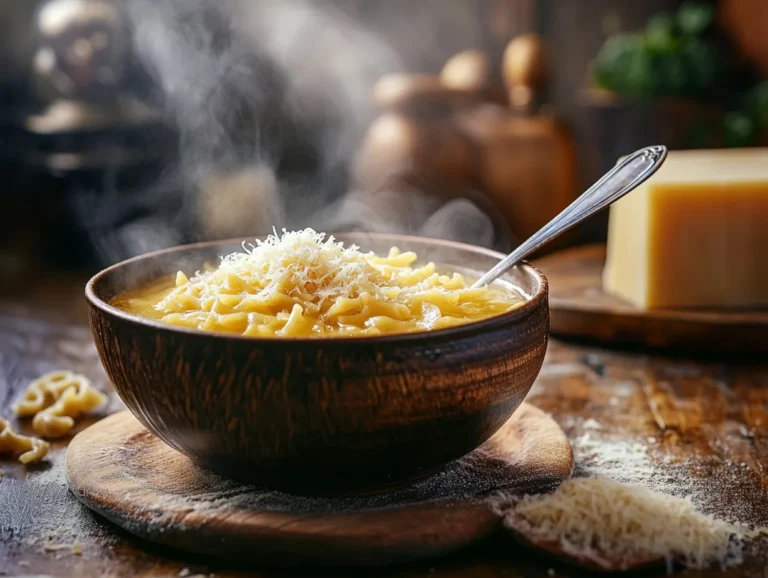If there’s one dish that wraps you in a warm hug with every bite, it’s the pastina recipe. This tiny star-shaped pasta has been a beloved staple in Italian kitchens for generations. Whether served to soothe a sick child, comfort a weary soul, or simply create a quick and wholesome meal, pastina holds a special place in our hearts—and on our dinner tables.
In this article, we’re diving deep into everything you need to know about pastina. From its humble origins to variations that suit any dietary need, we’ll walk you through ingredients, cooking tips, storage tricks, and even how to make it toddler-friendly. Plus, we’ll answer common questions and help you avoid kitchen mishaps that could ruin this delicate dish. So, grab a cozy bowl and let’s get started.
What is Pastina and Why is It So Loved?
What is Pastina?
Let’s start with the basics—what exactly is pastina? The word “pastina” literally means “little pasta” in Italian, and that’s exactly what it is: the smallest variety of pasta, traditionally shaped like tiny stars, dots, or other small designs. It’s often the very first pasta Italian children eat, lovingly cooked in broth by their nonna (grandmother).
More than just small pasta, a true pastina recipe is simplicity at its finest—boiled in broth and enriched with butter, cheese, or even a beaten egg. It’s soothing, filling, and incredibly easy to make. And because of its tender size and texture, it’s a top pick for anyone who’s under the weather, teething, or just in need of some TLC.
Pastina as Italian Comfort Food
Across generations, pastina has become a symbol of comfort food in Italian and Italian-American households. It’s often prepared when someone’s feeling sick, tired, or simply needs a taste of home. The silky texture and subtle flavors are easy on the stomach and even easier on the heart.
Think of it as the Italian version of chicken noodle soup—but with fewer ingredients and more love. Whether you’re a busy parent or a nostalgic foodie, the classic pastina recipe is a gentle reminder that good food doesn’t have to be complicated.
Cultural Significance and History
Historically, pastina has roots in traditional Italian peasant cooking. In times when resources were limited, people created nourishing meals with what they had on hand—usually chicken broth, butter, and pasta. These modest ingredients turned into magic, laying the foundation for one of Italy’s most iconic comfort foods.
Today, it’s not uncommon to hear stories of grandmothers preparing pastina “just like mama used to make.” Its cultural longevity is a testament to how such a tiny pasta can carry so much flavor, memory, and emotion.
Ingredients for a Traditional Pastina Recipe
Basic Pantry Staples You’ll Need
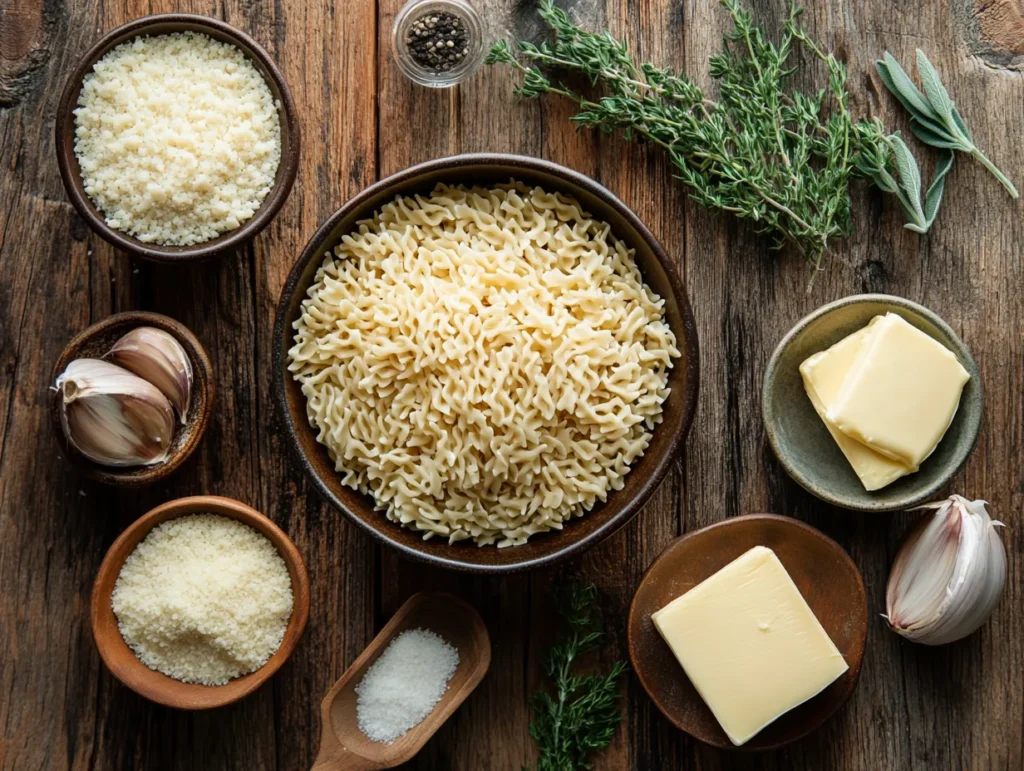
At its core, a pastina recipe is delightfully simple—and that’s part of its charm. With just a few pantry staples, you can whip up a warm bowl of this Italian comfort food in minutes. Here’s what you’ll need to make the classic version:
- Pastina pasta (typically star-shaped or acini di pepe)
- Chicken broth or stock – low-sodium or homemade
- Butter or olive oil
- Salt and black pepper, to taste
- Parmesan cheese, freshly grated
Some cooks also add a beaten egg, stirred in during the last moments of cooking to create a rich, silky texture that’s almost like a hug in a bowl.
For best results, use a good-quality homemade broth. But if you’re in a pinch, a carton of low-sodium chicken broth works beautifully.
Optional Add-ins for Extra Flavor
Want to level up your pastina recipe without making it complicated? Try adding:
- A spoonful of cream cheese or mascarpone for a creamy twist
- Chopped fresh parsley or basil for a pop of freshness
- A dash of garlic powder or onion powder for extra depth
These additions keep things interesting without straying too far from the traditional feel.
Ingredient Substitutions: Dairy-Free or Vegetarian
You can easily tailor this dish to suit different dietary needs. For a vegetarian pastina, simply swap the chicken broth for vegetable broth. In fact, this substitution is not only common—it’s delicious. (Check out this similar cozy Lentil and Spinach Soup Recipe for another great plant-based comfort dish.)
For a dairy-free option, skip the butter and cheese and use olive oil for richness. The result is still soothing and satisfying—just a little lighter.
Step-by-Step: How to Make Pastina
Preparing Your Ingredients Ahead of Time
Before diving into your pastina recipe, take a minute to gather your ingredients and prep them. Because this dish cooks fast—seriously, it’s done in about 10 minutes—you don’t want to be scrambling while the pot’s on the stove.
Here’s your quick prep checklist:
- Measure out your pastina pasta
- Pour your broth into a small pot
- Grate your Parmesan cheese
- Crack and beat the egg (if using)
- Chop fresh herbs (if adding any)
Having everything ready means less stress and more delicious results.
Cooking Instructions for Perfect Texture
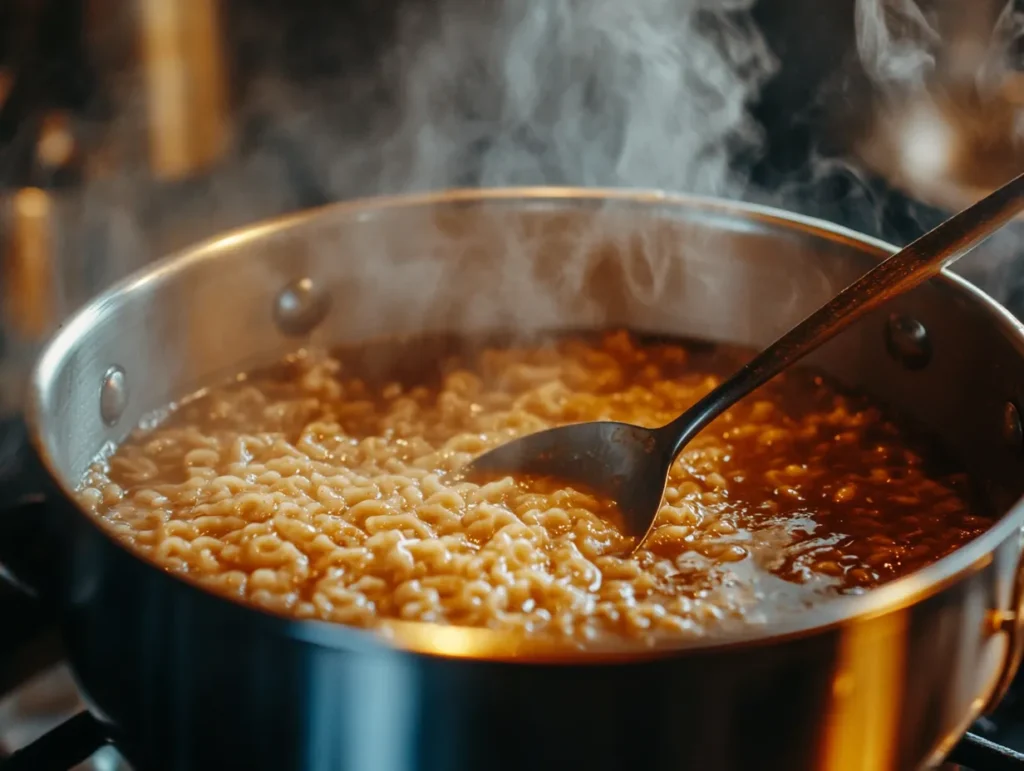
Let’s get cooking!
- Bring the broth to a gentle boil in a small saucepan. For every ½ cup of pastina, use about 1 ½ cups of liquid.
- Add the pastina and stir gently. Keep the heat at a simmer and stir occasionally to avoid sticking.
- Cook for 5–7 minutes, or until the pastina is tender. It should absorb most of the broth but still have a bit of liquid left—like a risotto.
- Add your butter or olive oil, stir, and then mix in your cheese. For an extra-cozy version, pour in the beaten egg while stirring, letting it cook gently into silky strands.
- Taste and adjust the salt and pepper as needed. Serve immediately, garnished with more cheese or herbs if you like.
And just like that, you’ve got yourself a bowl of love in under 15 minutes.
Pro Tips: Stirring, Simmering, and Serving
To avoid overcooking, make sure you don’t walk away from the pot. Pastina cooks lightning fast, and it can turn mushy in a heartbeat.
Also, try to use a heavy-bottomed pan—it helps prevent the pasta from sticking and gives you more even cooking.
When serving, ladle it into a warm bowl and top with a generous sprinkle of Parmesan. Pair it with a crusty slice of garlic bread, or follow it up with something sweet like classic tiramisu for a full Italian-style comfort meal.
Variations on the Classic Pastina Recipe
Cheesy Pastina with Egg – The Classic Italian Grandma Style
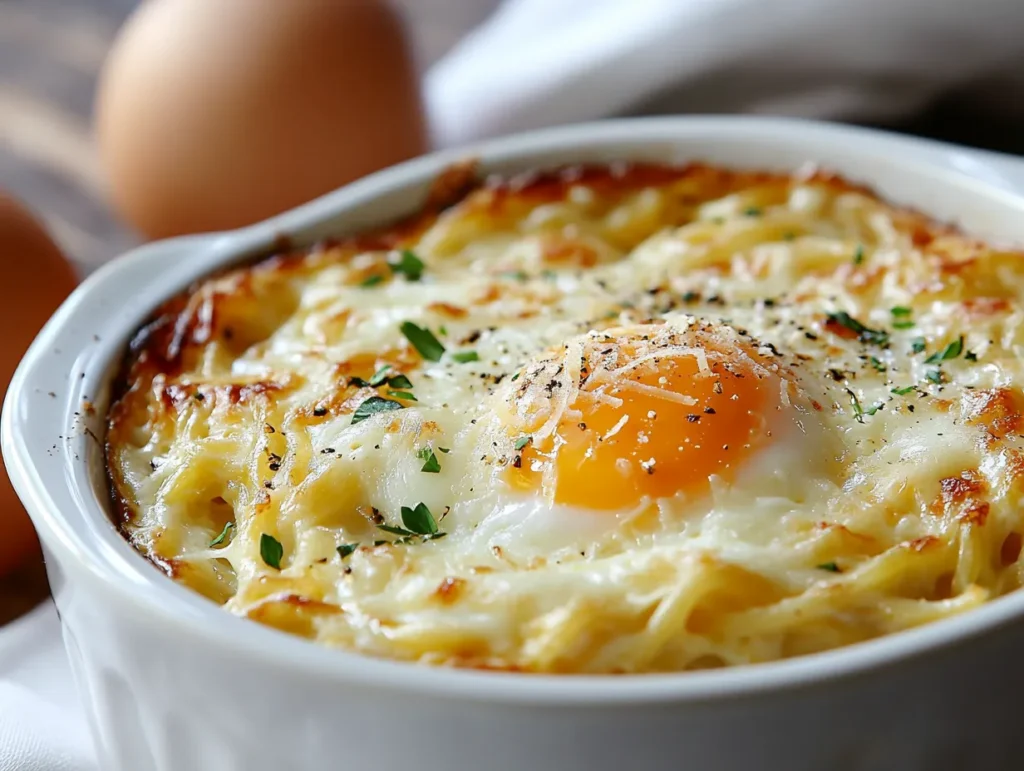
When folks think of a pastina recipe, this version usually comes to mind. It’s how Italian grandmothers, or nonnas, have made it for generations—creamy, rich, and ridiculously comforting.
To make it this way, just follow the basic method, but whisk in a beaten egg during the final minute of cooking. Stir continuously while pouring the egg into the hot pastina. The result? A luxurious texture, almost like an Italian egg drop soup. Top it off with extra Parmesan cheese and a knob of butter. Pure magic.
This version is ideal for chilly nights, sick days, or anytime you want something warm and soothing—fast.
Vegetable Pastina for Kids
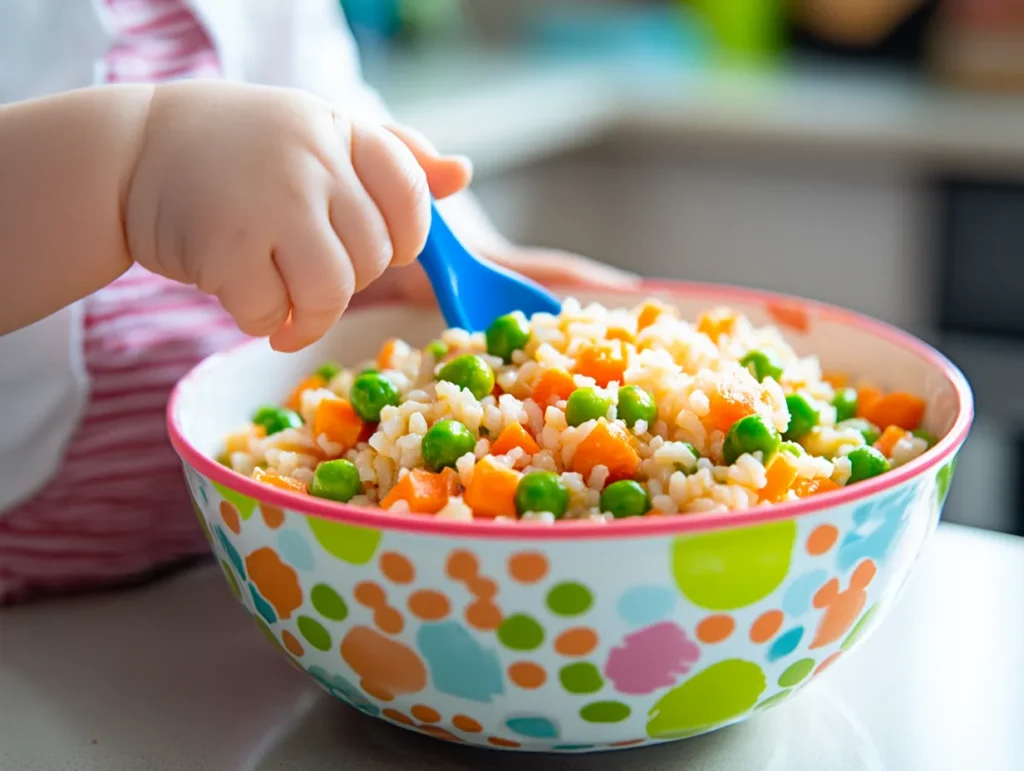
Trying to sneak in veggies? This one’s for you. Add finely diced carrots, zucchini, spinach, or peas directly into the simmering broth while cooking the pasta. These small, soft pieces blend in so well that even picky eaters won’t notice.
Pastina for babies or toddlers becomes even more nutritious with these simple veggie upgrades. Just be sure to chop everything finely so it cooks quickly and safely.
Pastina with Parmesan and Butter (No Broth)
No broth in the pantry? No problem! This dry-style pastina recipe cooks the pasta in water, then finishes it off with butter and a generous handful of cheese. It’s just as satisfying and ultra-easy.
You can even toss in a pinch of garlic powder or a splash of milk to make it extra creamy.
Vegan and Gluten-Free Pastina Options
If you’re skipping dairy or gluten, don’t worry—pastina still has your back. Use gluten-free small pasta shapes and swap butter for olive oil or vegan butter. Nutritional yeast makes a nice cheesy stand-in, and veggie broth keeps everything flavorful.
Serving Suggestions and Storage Tips
What to Serve with a Warm Bowl of Pastina
A bowl of pastina is pretty much a meal in itself, but pairing it with the right sides can make it feel extra special.
- Crusty Italian bread or garlic toast for dipping
- A crisp green salad with balsamic vinaigrette
- Roasted veggies or a side of steamed greens
It also makes a lovely starter before a bigger Italian main dish, like eggplant parmesan or grilled chicken.
How to Store and Reheat Leftovers
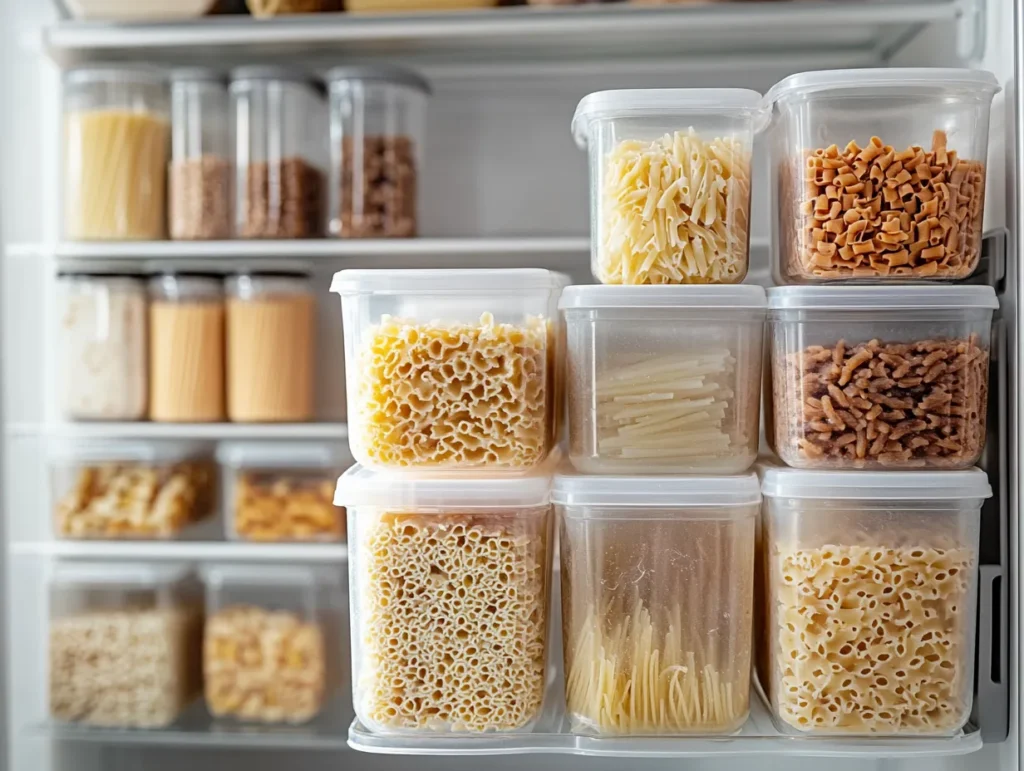
One of the great things about this pastina recipe is that it stores well—especially if you make a big batch.
- Refrigerate any leftovers in an airtight container for up to 3 days.
- To reheat, add a splash of broth or water before microwaving or warming on the stove. This helps loosen it up, since pastina tends to thicken as it cools.
- For longer storage, you can freeze it, though it’s best fresh. If freezing, portion it into small containers and thaw in the fridge overnight before reheating.
For more cozy comfort food ideas and unique home-cooked meals, check out other delicious recipes on Daily Dish Diary.
Nutrition and Health Benefits of Pastina Recipe
Light, Soothing, and Easy to Digest
One of the most appealing things about a pastina recipe is how gentle it is on the stomach. Whether you’re feeling under the weather or just need a light meal, this dish is easy to digest and warming to the core. That’s why it’s often called a “sick day soup” or a healing food in Italian households.
Made with just a handful of ingredients—small pasta, broth, butter, and cheese—pastina offers nourishment without heaviness. It’s especially perfect for young children, elders, and those recovering from illness.
Great for Kids, Elders, and Recovery Meals
Because pastina is so soft and smooth, it’s often one of the first solid foods introduced to babies in Italian homes. Its size makes it safe for toddlers, and its mild flavor is easy to love. For adults, it’s a quick, comforting meal that can be adjusted for dietary needs.
Add an egg or a bit of olive oil to boost healthy fats and protein. Or use vegetable broth and fresh herbs for a lighter, plant-based version.
Calorie Count and Nutritional Breakdown
On average, one serving of a traditional pastina recipe contains:
- Around 200–300 calories
- 5–8g protein
- Low sugar content
- Good source of carbs for energy
If you’re health-conscious, try using whole wheat pastina or gluten-free alternatives for a more nutrient-dense spin.
Common Mistakes to Avoid When Making Pastina Recipe
Overcooking the Pasta
This one’s a classic mistake—and a quick way to turn your pastina recipe into mush. Because pastina is so tiny, it cooks faster than larger pasta shapes. That means even an extra minute can make a big difference.
Keep an eye on your pot, stir gently, and don’t walk away. Aim for that perfect soft-but-not-soggy texture.
Choosing the Wrong Pasta Shape
Although pastina literally means “little pasta,” not all mini pasta shapes are created equal. Stick with star-shaped pastina, acini di pepe, or stelline for the most authentic result. Using larger pasta may change the texture and make the dish less comforting or familiar.
If you’re in a pinch, couscous or orzo can work, but the experience just isn’t quite the same.
Skipping the Broth or Seasoning
Don’t make the mistake of using plain water without seasoning. A flavorful broth is the heart of a good pastina recipe. It brings depth and warmth to the dish, even when using just a few ingredients. So always taste and adjust before serving!
Pastina in Italian-American Households
Stories from Generations
If you ask any Italian-American family about comfort food, chances are they’ll mention a pastina recipe with a smile. Passed down from nonna to mom and now to grandkids, pastina isn’t just a dish—it’s a memory. From snowy mornings to sniffly afternoons, it has always been there.
Many remember sitting at the kitchen table, wrapped in a blanket, waiting for that little bowl of warm, starry pasta to arrive. Others recall how it marked their very first introduction to solid food. It’s these shared memories that keep pastina so close to the heart.
How It’s Used in Celebrations and Sick Days
While pastina is often served during illness, it’s also used to celebrate life’s small moments. Whether it’s a baby’s first bite, a cozy family dinner, or just a rainy day, the simplicity of a pastina recipe makes it a go-to meal. It’s home, in a bowl.
FAQs About Pastina Recipe
To round out everything we’ve covered, here are answers to a few common questions about this classic comfort dish.
What is pastina?
Pastina is the smallest form of pasta, often shaped like tiny stars (stelline) or balls (acini di pepe). It’s traditionally cooked in broth and served with butter and cheese. While it’s simple, a pastina recipe can be incredibly flavorful and comforting.
Can I use a different type of pasta?
Yes, though it’s not quite the same. If you can’t find pastina, orzo or couscous can be used in a pinch. However, the texture and size won’t match the classic experience. For that nostalgic feel, it’s best to stick with traditional pastina shapes.
Can I use vegetable broth instead of chicken broth?
Absolutely! Many people do. Vegetable broth is a great alternative if you’re vegetarian or just looking for a lighter flavor. Just make sure it’s a well-seasoned broth to keep the dish tasty and nourishing.
Is pastina healthy for babies and toddlers?
Yes—when made with care. A traditional pastina recipe is easy to digest and soft enough for little mouths. Just avoid adding too much salt, and skip the cheese or egg until your baby is ready. You can also add in finely mashed vegetables for extra nutrients
Final Thoughts – Bringing the Pastina Recipe Into Your Kitchen
At the end of the day, the pastina recipe is more than just a quick meal—it’s a tradition, a comfort, and a taste of home. Whether you’re feeding a fussy toddler, comforting a loved one, or simply craving something warm and familiar, pastina always delivers.
The beauty of this dish lies in its simplicity. With just a few ingredients and minimal effort, you can create something deeply satisfying. So why not keep some pastina in your pantry? Next time life feels hectic, you’ll have the perfect dish to slow things down—one spoonful at a time.
Print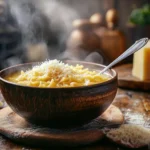
Pastina Recipe – Cozy Italian Classic
- Total Time: 15 minutes
- Yield: 2 servings
- Diet: Vegetarian
Description
This Pastina Recipe is the ultimate bowl of Italian comfort. Made with tiny star-shaped pasta, savory broth, butter, and cheese, it’s quick, soothing, and perfect for all ages.
Ingredients
-
1/2 cup pastina pasta (star-shaped or acini di pepe)
-
2 cups low-sodium chicken or vegetable broth
-
1 tablespoon unsalted butter
-
1/4 cup grated Parmesan cheese
-
1 egg (optional, for cheesy egg version)
-
Salt and black pepper, to taste
-
Optional: diced carrots, peas, chopped parsley
Instructions
-
In a small pot, bring broth to a gentle boil.
-
Add pastina and stir occasionally. Cook for 5–7 minutes until tender.
-
Lower the heat, stir in butter and Parmesan cheese.
-
(Optional) Pour in a beaten egg while stirring continuously to create silky strands.
-
Season with salt and pepper to taste.
-
Serve warm, topped with extra cheese or herbs if desired.
Notes
- Use veggie broth for a vegetarian version.
- For babies, skip cheese and egg; mash in soft veggies for added nutrition.
- Leftovers thicken in the fridge—reheat with a splash of broth or water.
- Prep Time: 5 minutes
- Cook Time: 10 minutes
- Category: Lunch
- Method: Boiling
- Cuisine: Italian
Nutrition
- Calories: 260 kcal
- Sugar: 1g
- Sodium: 320mg
- Fat: 9g
- Saturated Fat: 4g
- Carbohydrates: 32g
- Fiber: 1g
- Protein: 10g
- Cholesterol: 70mg
Keywords: pastina recipe, Italian comfort food, star-shaped pasta, toddler meal, cheesy pastina, pasta with egg, broth pasta, quick lunch

